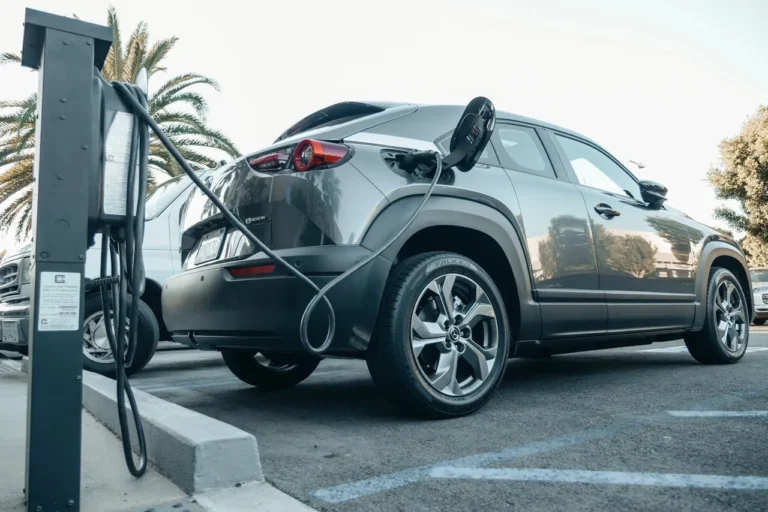
Global Electric Commercial Vehicle Market Set for Explosive Growth Through 2031 Driven by Innovation, Policy Support, and Fleet Electrification
The newly released “Electric Commercial Vehicle Market (2025 Edition): Analysis By Vehicle Type, Propulsion Type, Application, Region, and Country (2021–2031)” from ResearchAndMarkets.com provides a comprehensive analysis of one of the most rapidly evolving sectors in transportation. The global electric commercial vehicle (ECV) market is undergoing a major transformation, fueled by sustainability imperatives, technological breakthroughs, and strong policy incentives.
Market Overview and Forecast
The global ECV market was valued at USD 64.84 billion in 2024 and is projected to skyrocket to USD 411.22 billion by 2031, growing at a robust compound annual growth rate (CAGR) of 25.44% during 2021–2024. The report provides detailed insights covering the historical period (2021–2024), estimates for 2025, and projections through 2031.
This dramatic growth underscores the increasing shift from diesel-powered fleets to electric alternatives, driven by both environmental concerns and cost efficiency. As governments and corporations work to meet aggressive carbon neutrality targets, ECVs are becoming a cornerstone of green logistics, public transport modernization, and industrial decarbonization strategies.
Key Growth Drivers
Several factors are accelerating the adoption of electric commercial vehicles globally:
- Environmental Regulations & Policy Support: Government policies such as the European Union’s Fit for 55 climate package, the United States’ Inflation Reduction Act, China’s New Energy Vehicle (NEV) mandates, and India’s FAME (Faster Adoption and Manufacturing of Hybrid and Electric Vehicles) program are directly influencing ECV adoption. These policies offer subsidies, tax benefits, and infrastructure investments that reduce the total cost of ownership (TCO) of ECVs and make them more competitive with internal combustion engine (ICE) vehicles.
- Urban Emission Zones: Many cities across Europe, North America, and Asia are implementing or expanding low-emission and zero-emission zones. These restrictions are pushing fleet operators to replace diesel trucks and buses with electric alternatives.
- Battery Advancements & Charging Infrastructure: Lithium-ion batteries dominate the market due to their high energy density and steadily declining prices. Over the past decade, battery costs have dropped by over 85%, making electric vehicles more affordable. In parallel, fast-charging and wireless charging technologies are addressing range anxiety and boosting fleet uptime.
- Corporate Sustainability Goals: Major logistics, e-commerce, and retail companies—including Amazon, Walmart, FedEx, UPS, and DHL—are electrifying their fleets to meet internal ESG targets, reduce operational costs, and comply with tightening emission standards.
Market Segmentation
The ECV market is divided into multiple segments by vehicle type, propulsion technology, and application, each contributing to market expansion:
By Vehicle Type
- Light Commercial Vehicles (LCVs): The most dominant segment, LCVs are favored for urban last-mile delivery due to their agility, lower energy requirements, and compact size.
- Medium Commercial Vehicles (MCVs): These are gaining popularity in regional logistics and municipal applications like waste collection and street cleaning.
- Heavy Commercial Vehicles (HCVs): Though adoption is slower due to higher power demands and infrastructure requirements, HCVs are increasingly viable for long-haul freight with advancements in battery technology and fuel cell systems.
By Propulsion Type
- Battery Electric Vehicles (BEVs): BEVs make up the bulk of the ECV fleet, benefiting from declining battery costs and growing charging infrastructure.
- Hybrid Electric Vehicles (HEVs): HEVs serve as a transitional solution in regions where charging infrastructure is underdeveloped.
- Fuel Cell Electric Vehicles (FCEVs): While still niche due to high costs and limited hydrogen infrastructure, FCEVs are seen as promising for long-haul applications due to fast refueling and longer range.
By Application
- Last-Mile Delivery: One of the fastest-growing applications, driven by e-commerce and on-demand logistics.
- Public Transport: Electric buses are increasingly deployed by municipalities to combat urban air pollution and modernize public transport systems.
- Industrial Use: Warehousing, mining, and construction are incorporating ECVs to reduce emissions and noise in enclosed or environmentally sensitive environments.
- Airport and Port Operations: Electric ground support vehicles and cargo transporters are becoming standard in logistics hubs striving for sustainability.
Regional Trends
Asia-Pacific
Asia-Pacific leads the global ECV market in volume and production capacity. China, in particular, is the largest market, with strong domestic demand, policy incentives, and manufacturing dominance. Home to leading OEMs like BYD, SAIC, and Foton, China also benefits from vertically integrated battery supply chains.
Europe
Europe is a close second, with countries like Germany, France, Netherlands, and the United Kingdom pushing electrification through environmental regulations, city-level initiatives, and subsidies. European OEMs like Volvo, Daimler Truck, and Renault are innovating in electric trucks and vans, especially for urban logistics.
North America
North America is seeing rapid growth, driven by private sector investments and an improving policy landscape. U.S.-based manufacturers such as Tesla, Rivian, Ford, and GM are launching a range of electric pickups, delivery vans, and medium-duty trucks. Canada is also increasing investment in clean mobility infrastructure.
Other Regions
While the Middle East & Africa and Latin America are still in the early stages, growing urbanization and import-led fleet electrification are opening new opportunities.
Industry Innovations and Emerging Business Models
Startups and new entrants are reshaping the ECV landscape with:
- Direct-to-Fleet Sales Models: By cutting out traditional dealerships, new players offer customized leasing and subscription-based models.
- Vehicle-as-a-Service (VaaS): Fleets can now bundle electric vehicles with maintenance, insurance, telematics, and charging in a single monthly payment, lowering barriers to entry for small businesses.
- Smart Telematics & AI Integration: Fleet operators are leveraging AI for route optimization, predictive maintenance, and energy efficiency.
- Vehicle-to-Grid (V2G) Solutions: Utilities and fleet operators are exploring bidirectional energy systems that allow ECVs to store and return electricity to the grid, enhancing energy resilience.
Competitive Landscape
The market includes both legacy automotive giants and innovative disruptors. Key players include:
- Tesla, Inc.
- AB Volvo
- Daimler Truck Holding AG
- Rivian Automotive, Inc.
- Ford Motor Company
- International Motors, LLC
- Isuzu Motors Limited
These companies are investing in platform development, battery partnerships, and strategic collaborations to gain a competitive edge.
Analyst Recommendations
Based on current trends and forecast data, analysts recommend the following strategic moves for stakeholders:
- Develop After-Sales and Support Ecosystems: Establishing strong maintenance, parts, and digital service support is critical to ensure uptime and TCO competitiveness.
- Strengthen Battery and Charging Technology: Investing in next-gen batteries, ultra-fast charging, and energy management systems will enable long-term scalability.
- Focus on Fleet Partnerships: Collaborations with logistics companies and municipalities can unlock large-scale deployments and recurring revenues.
- Expand Modular Platforms: OEMs should continue to develop scalable electric vehicle architectures to meet diverse commercial needs across geographies.






